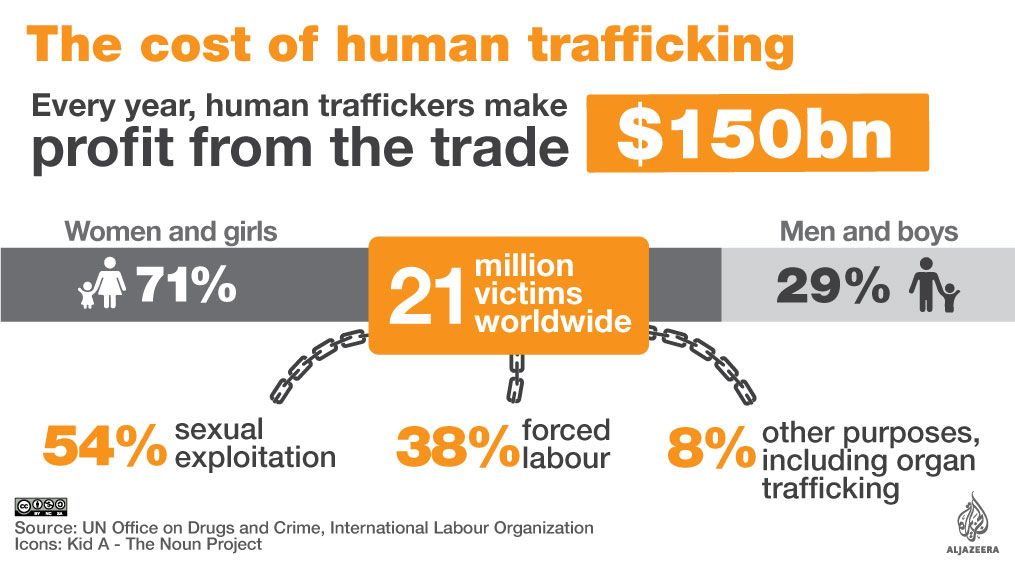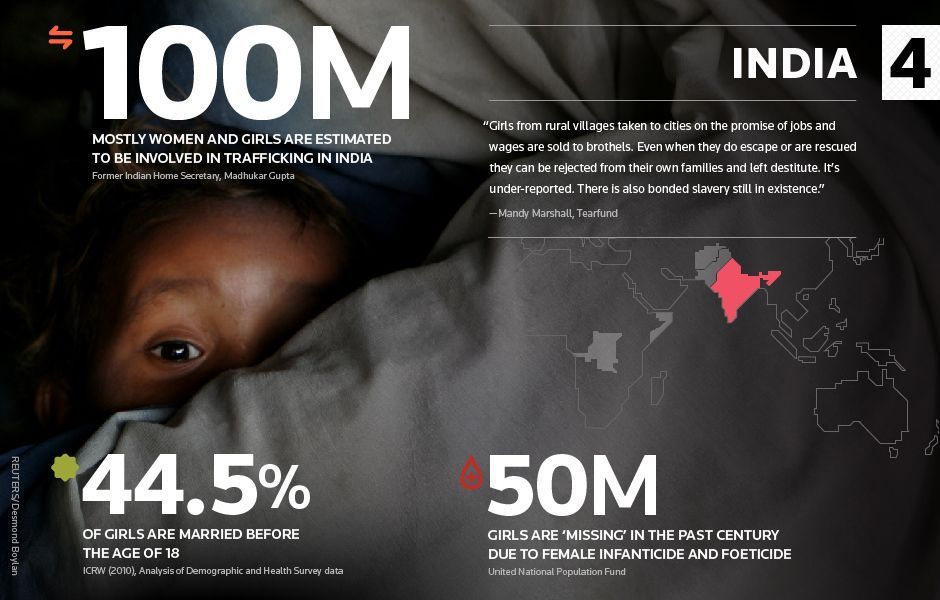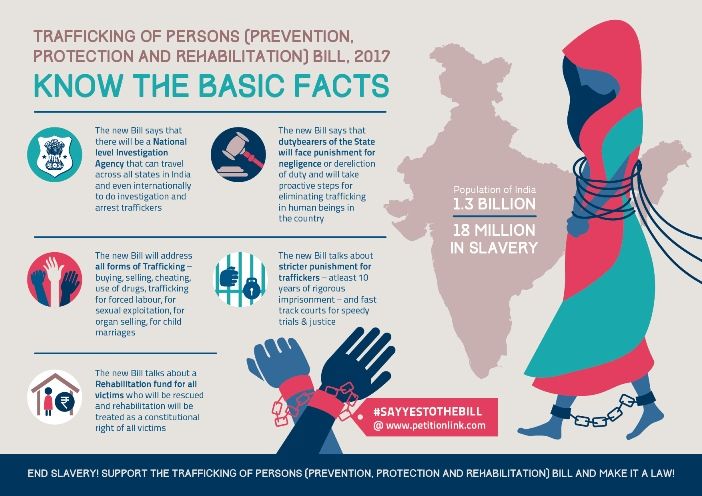Trade Of Humans - Human Trafficking
May 23, 2019 • 17 views
“The trade in human beings, a modern form of slavery, … violates the God-given dignity of so many of our brothers and sisters and constitutes a true crime against humanity.” — Pope Francis
Human trafficking is the third largest organised crime after drugs dealing, smuggling and arms trade across countries in the world. It reportedly generates a profit of $32 billion a year of that about $15.5 billion is from industrialised countries. Human trafficking is when a person is forced, coerced, abused or deceived into being enslaved, or any other form of exploitation. People can be trafficked for several reasons such as forced marriage, forced prostitution, forced labour, forced begging, forced criminal activities, forced organ removal and domestic servitude.

Unlike majoritarian misconception, people are not necessarily transported through international borders. Trafficking can also take place within national borders. When a person is trafficked, it does not necessarily mean that they have been transported. It is the use of force or deception to exploit the rights of a person and force them to do something they do not want to do.
Sex trafficking gets the most attention but most of them are trafficked for labour exploitation. Most people fall into the trap because they want to evade poverty, they accept some shady job that they can get which offers a wonderful salary. When they reach the place of work, they find it is not there or that it does not meet their expectations. But by this time, the person has handed over their documents to their ‘owner’ and also signed a contract so they have to stay there and face the music.

Causes and Effects of Human Trafficking
The traffickers look for people who are vulnerable physically, emotionally or financially that they can take advantage of. They look for lack of social security net, political instability, emotional instability or any natural disasters. This can happen to anyone who is in a vulnerable position regardless of their socioeconomic status, their ethnicity or their geographic position. The trauma faced by the victims may be too high that they will be too afraid to seek help even in highly public settings. The fear of getting caught by the trafficker while asking for help trumps the feel of freedom or justice.

Human Trafficking in India
According to an article in Firstpost, India is home to more than half of the slaves in the world and Delhi is the national hub for illegal trade of humans. According to a report published by the Government of India, it was said that there were about 10 million sex workers in India and out of which there are 10,000 in Mumbai alone, Asia’s Largest Sex Industry Centre. There are about 30,000 o 50,000 children under the age of 18 involved in the sex trade. Every year more than 300 cases of Human Trafficking are reported in each of the four South Indian States. A report by the United Nations Office on Drugs and Crime reveals that West Bengal has the highest number of cases of Human Trafficking with 549 cases and the second highest is Tamil Nadu with 529 cases being reported in 2012. Further, it is assumed that only 30% of the cases get reported and that the number is actually much higher.

Why is Human Trafficking Increasing in India?
The leading causes are poverty, social power imbalance, social inequality, gender discrimination, corruption and the demands of the migrant commercial workers. When men migrate from one place to another for work, they have a heightened sexual urge for commercial sex. This induces a demand and supply issue which leads to sex human trafficking. When young children are being trafficked, the parents are often told that they are taking their children to offer them better education. So, the parents are under the impression that the children are studying and are living a peaceful life with the trafficker. They keep sending in some amount of cash to the trafficker to provide for their child’s basic needs.
